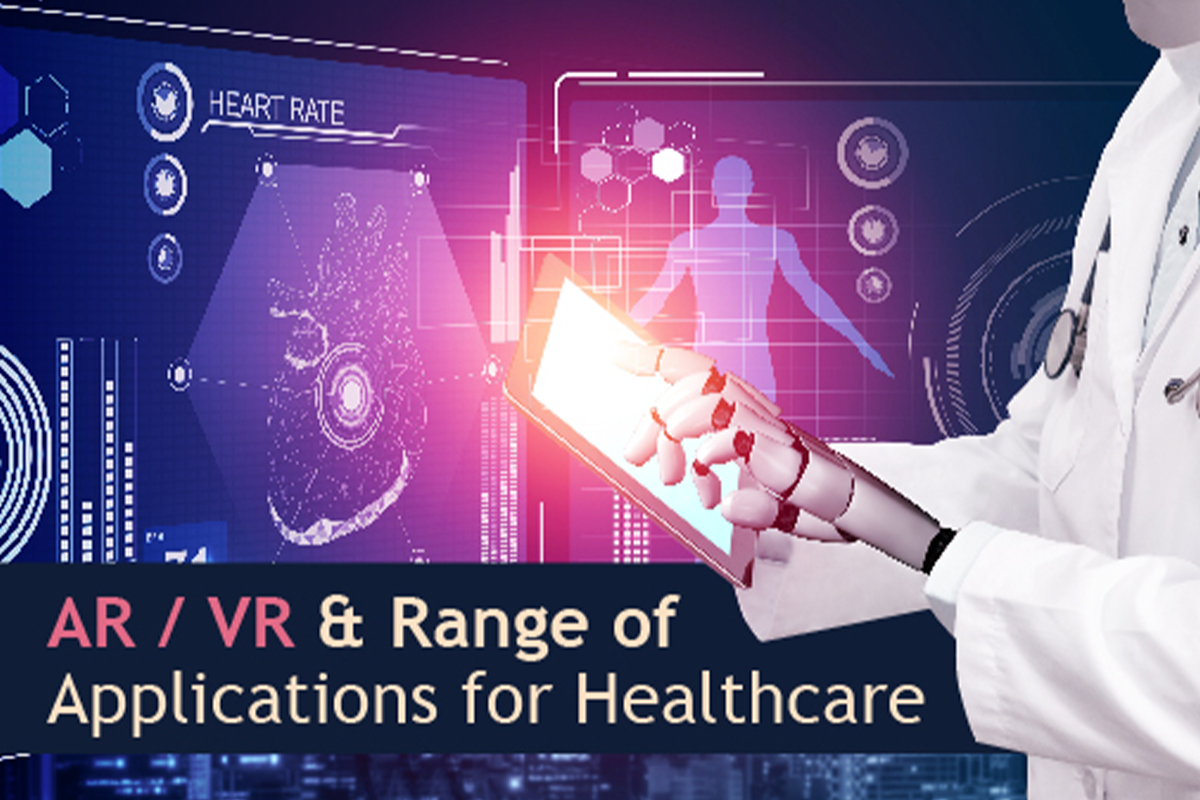
Augmented reality and Virtual reality (AR/ VR) started out as entertainment modes but have evolved to fit into professional landscapes of technology. Healthcare like many other industries has been quick to use this revolutionary technology to improve the way industry serves its end users.
VR is digitally generated three-dimensional computer world with which users can interact and explore through different peripheral devices. It provides an immersive experience to the users. AR differs from VR in the sense that it is not an immersive experience but rather an alternate reality thus enhancing the existing experience.
While there are a range of applications for AR/ VR in healthcare, a few of them stand out. Let’s go through the prominent applications for AR/ VR along with details on how they can create a sizeable impact.
Training physicians/ nursing staff:
Annually, hundreds of millions of dollars are spent on training physicians and nursing staff to prepare them to serve the patients in need. Simultaneously, lot of time is spent on these trainings. Using AR/ VR these trainings can retrofitted virtually to immerse them and provide them with hands-on experience of dealing with surgeries and understanding human anatomy without the need for a physical interaction. They can also be integrated with remote communication options and simulations which walk them through surgical procedures expediting the process and allowing them to practice and run the process to understand the mistakes.
Rehabilitation & pain management:
By simulating a visual environment that can offer relief to the users, VR can be used to treat psychologically ill patients. Simultaneously, patients with burns and amputations can be treated using VR therapy. They are already being implemented with sizeable success among numerous patients as noted by medical community across developing and developed nations.
Fitness management and tracking:
A highly relevant application for patients, VR can be used by anyone willing to carry on their fitness in a controlled environment. The benefit lies in the fact that without actually going out, users can experience a shared virtual environment with others by connecting the VR consoles to a common network. People who are not so social can leverage this mode to gain significant success. Offering tracking options, users can also track, share and compare their progress and ensure they are reaching expected level of success.
With increased implementation, medical community and patients are finding novice applications for this simple yet effective piece of technology. How are you leveraging it to create significant impact in healthcare? Let us connect!
If you want to learn how you can use AR/ VR or other technology to bring new solutions to the end-users, visit our website- https://sujainfo.com/.
